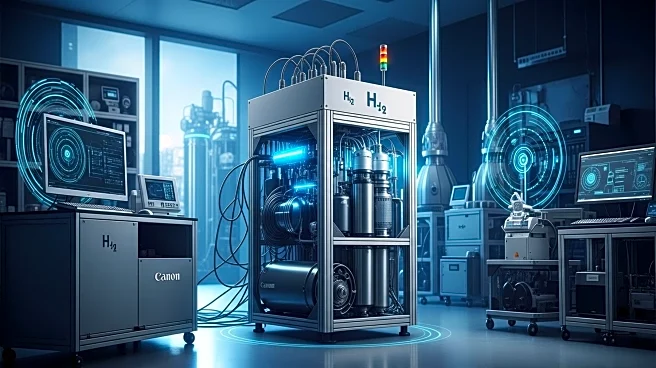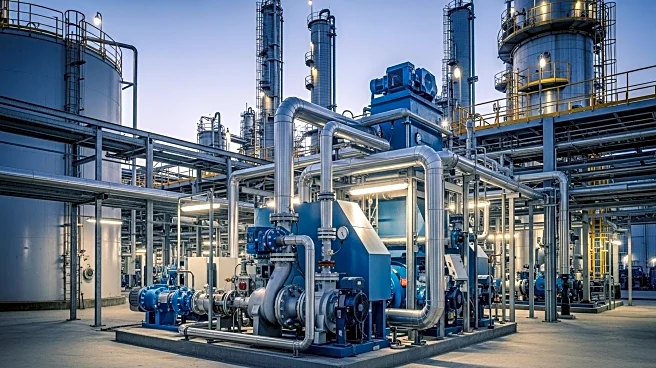What's Happening?
Hydrogen electrolyzers are emerging as a key technology in the global energy transition, with Europe leading the charge in scaling infrastructure. The European Commission's hydrogen strategy aims to install 40 GW of renewable hydrogen electrolyzers by 2030 within the EU, alongside another 40 GW in neighboring regions. This ambitious goal reflects significant public and private investments in electrolyzer projects, which are crucial for decarbonizing heavy industries and diversifying energy portfolios. Germany is at the forefront of this initiative, investing heavily in electrolyzer manufacturing and integration into industrial clusters.
Why It's Important?
Hydrogen electrolyzers represent a strategic asset for industries seeking to reduce emissions and secure sustainable feedstocks. The technology offers a pathway to decarbonizing sectors like steel and chemicals, where direct electrification is challenging. The scale-up of electrolyzer capacity is essential for meeting climate commitments and enhancing energy resilience. Europe's leadership in this area positions it as a key player in the emerging hydrogen economy, with implications for industrial competitiveness and energy security.
What's Next?
The deployment of hydrogen electrolyzers is expected to accelerate, driven by policy frameworks and investment commitments. Industries that engage early in pilot and scale-up projects will be best positioned to benefit from this transition. The integration of electrolyzers into renewable energy systems will enhance grid stability and support the production of clean hydrogen for industrial use. Continued innovation and cost reductions will be crucial in making hydrogen a competitive choice for large-scale energy needs.
Beyond the Headlines
The focus on hydrogen electrolyzers highlights the broader challenges and opportunities in the energy transition. The technology's adaptability and potential for integration into various sectors underscore its role in achieving net-zero goals. However, barriers such as cost, infrastructure gaps, and regulatory harmonization must be addressed to fully realize its potential.











